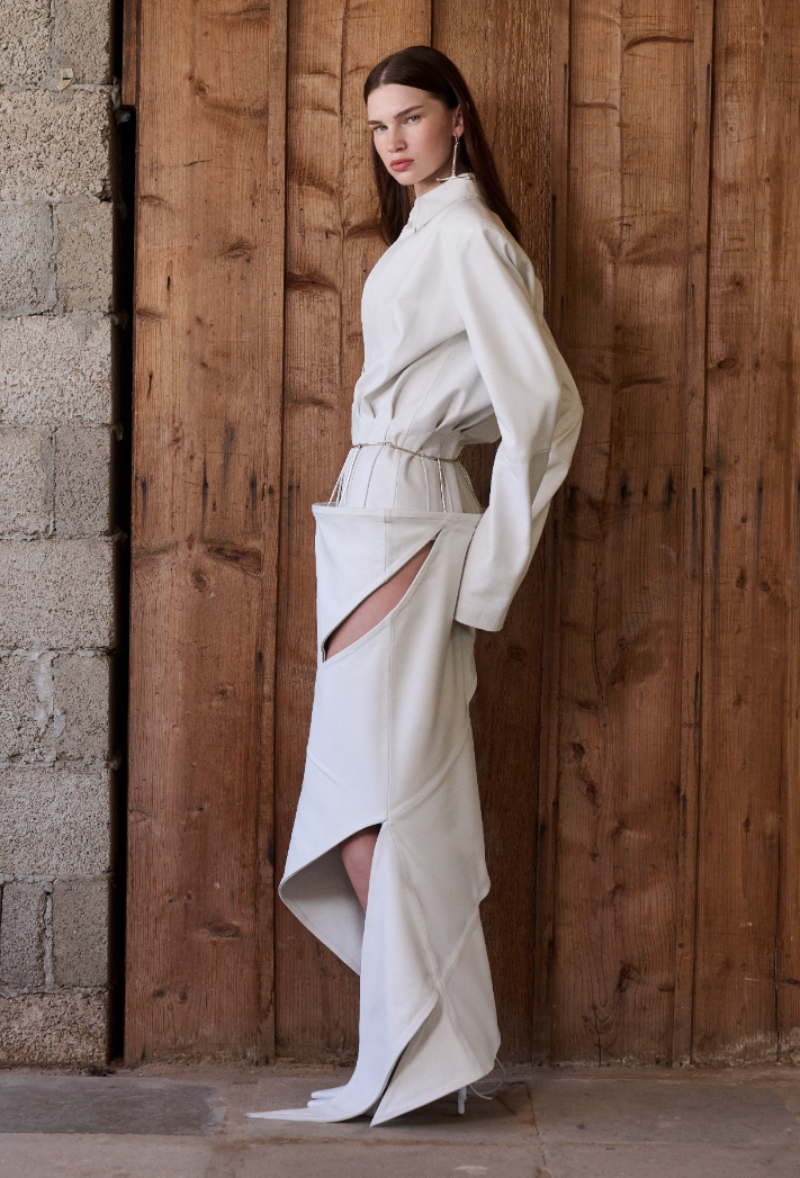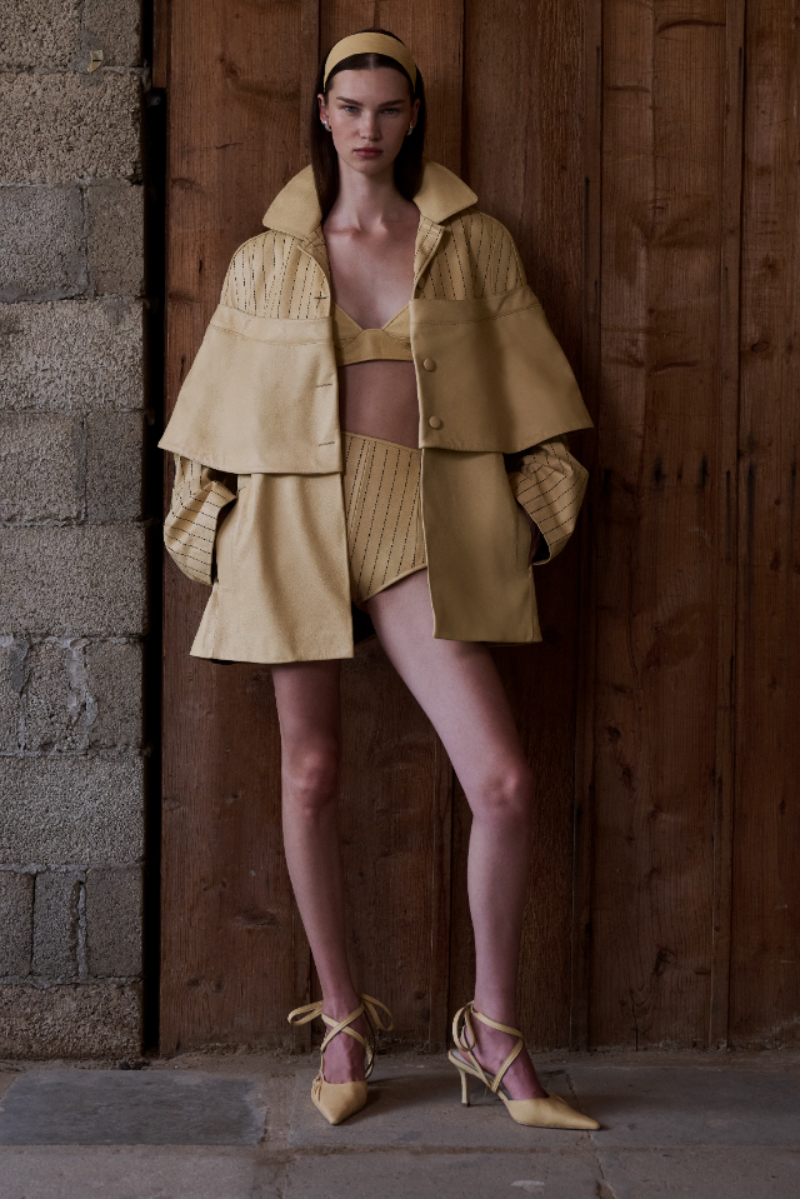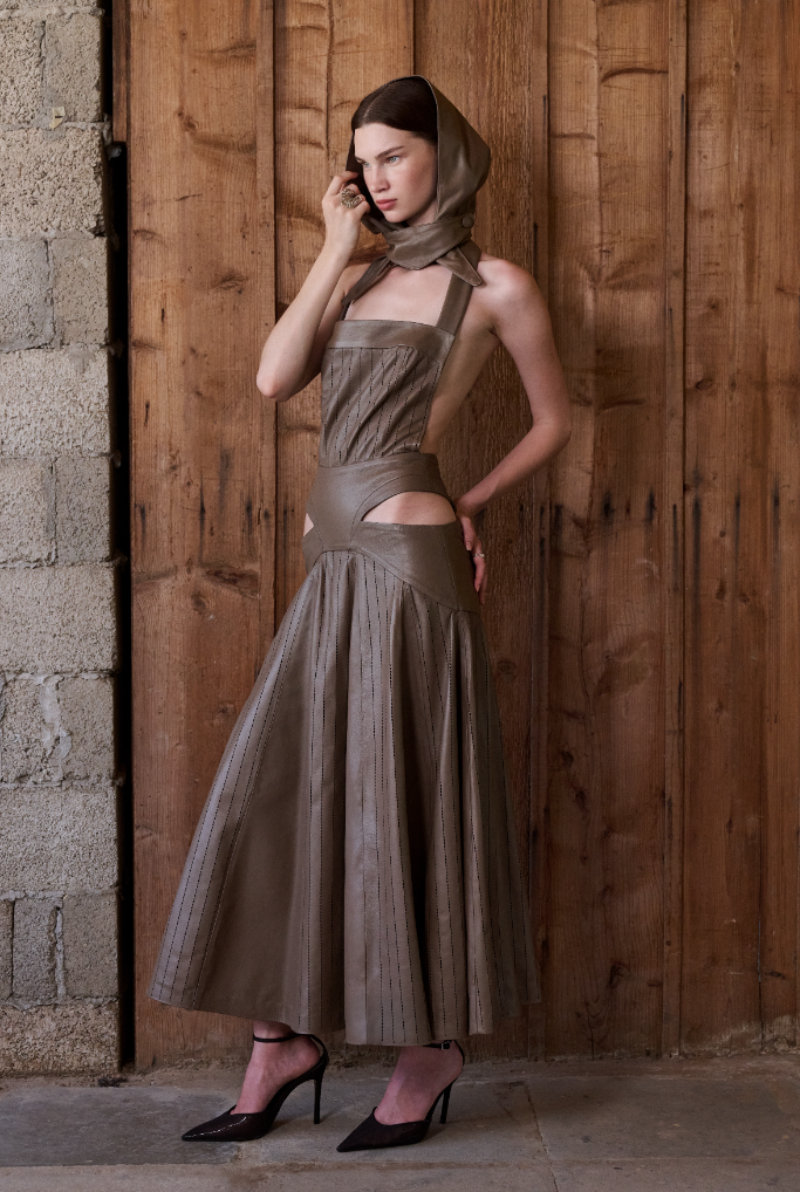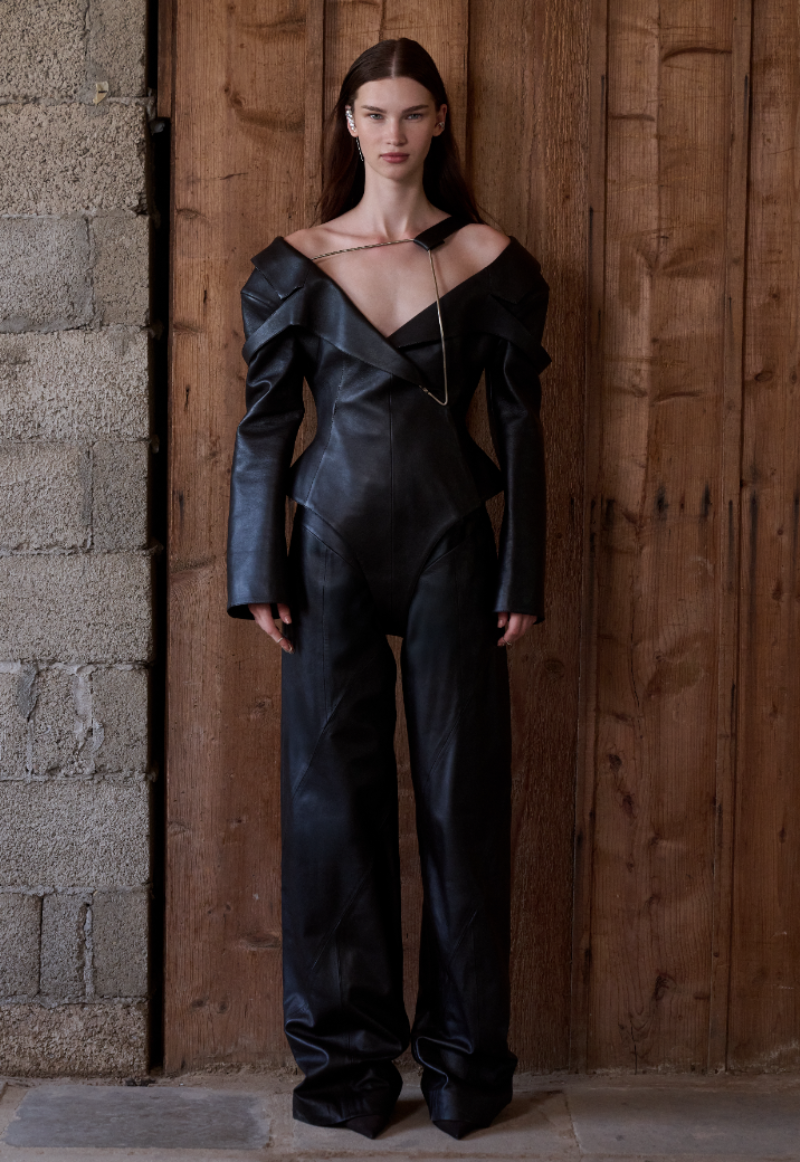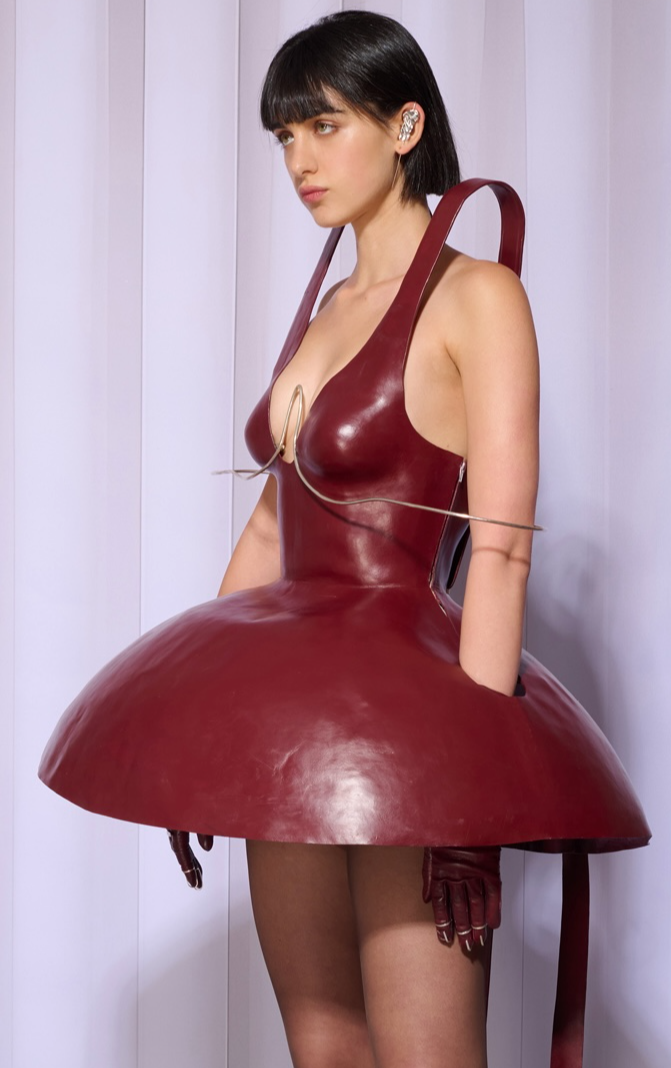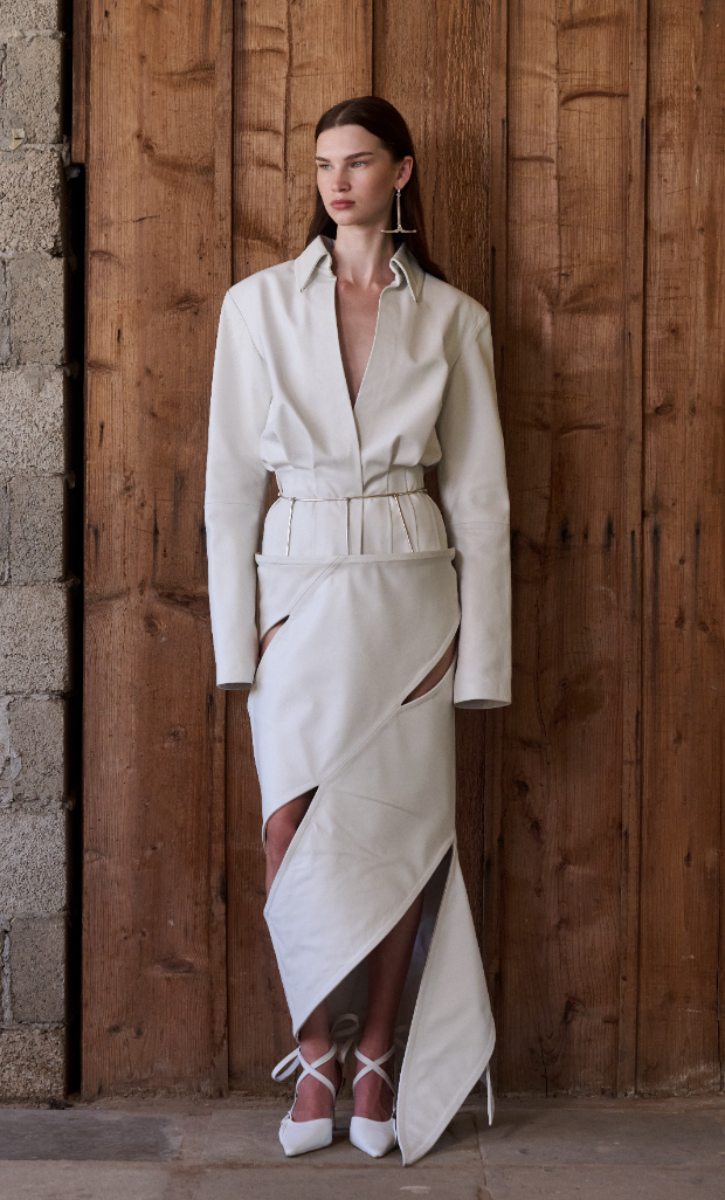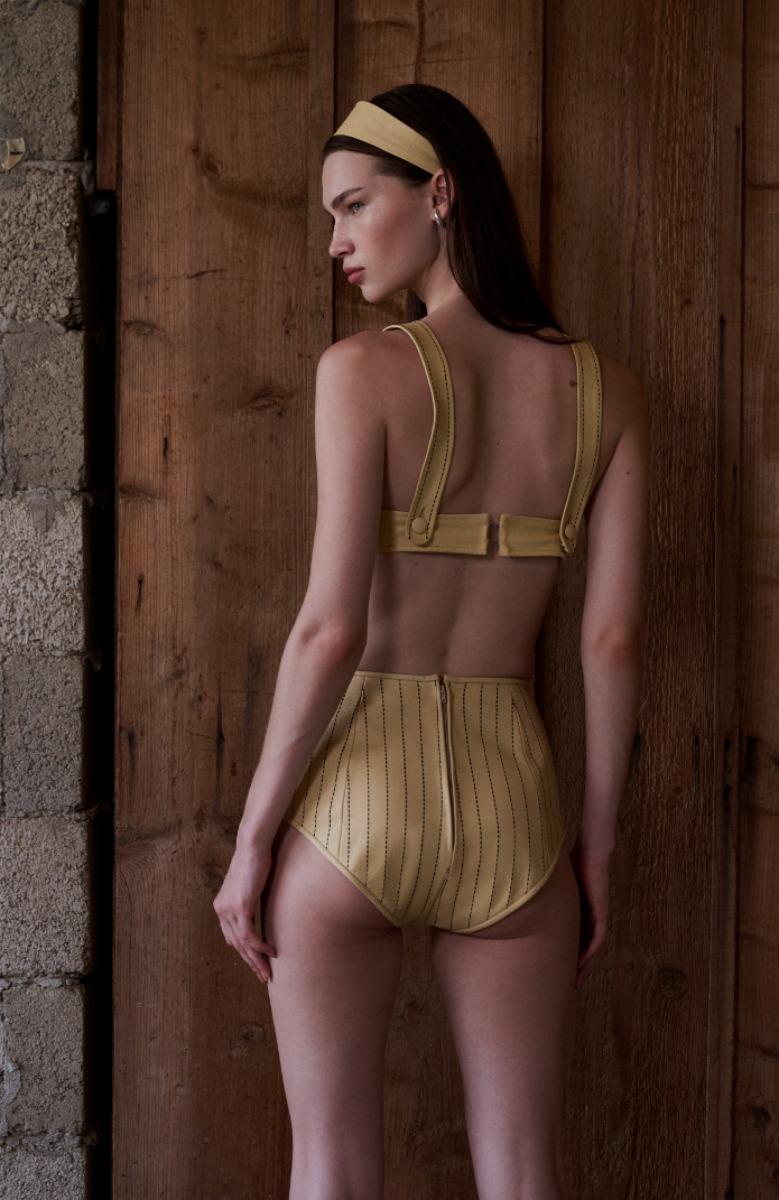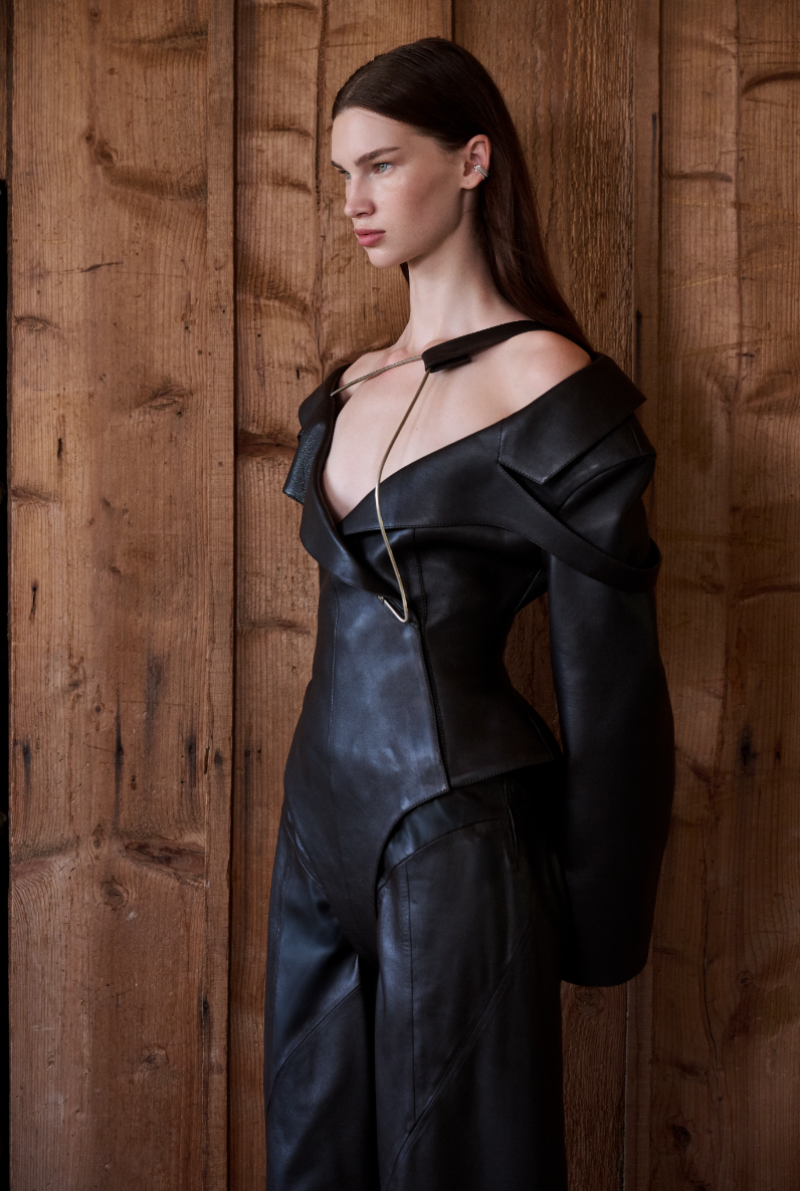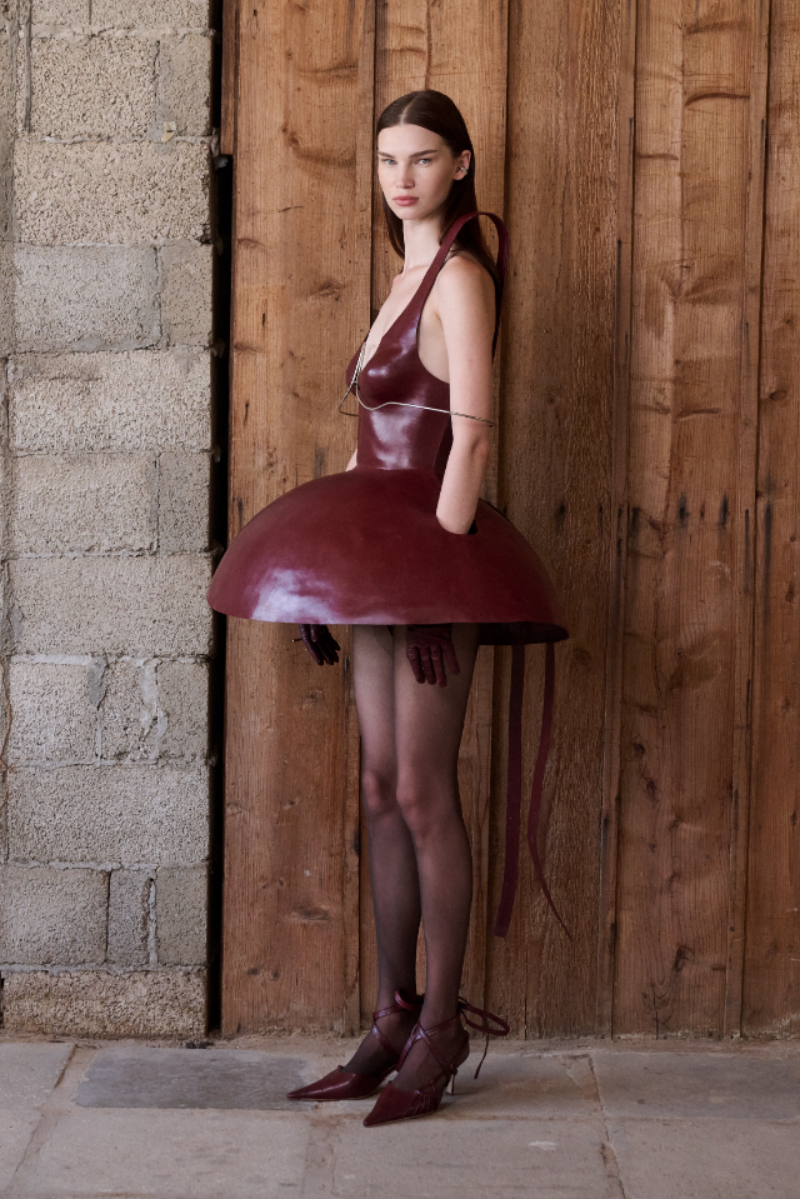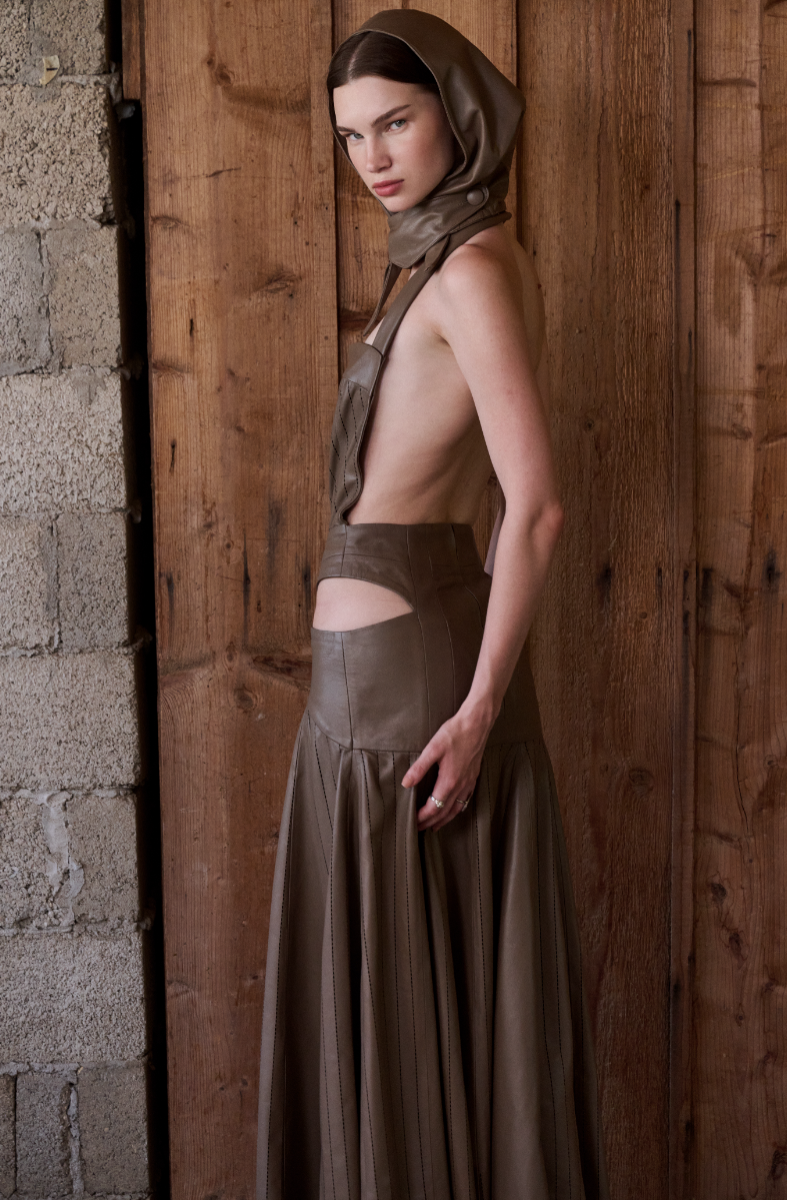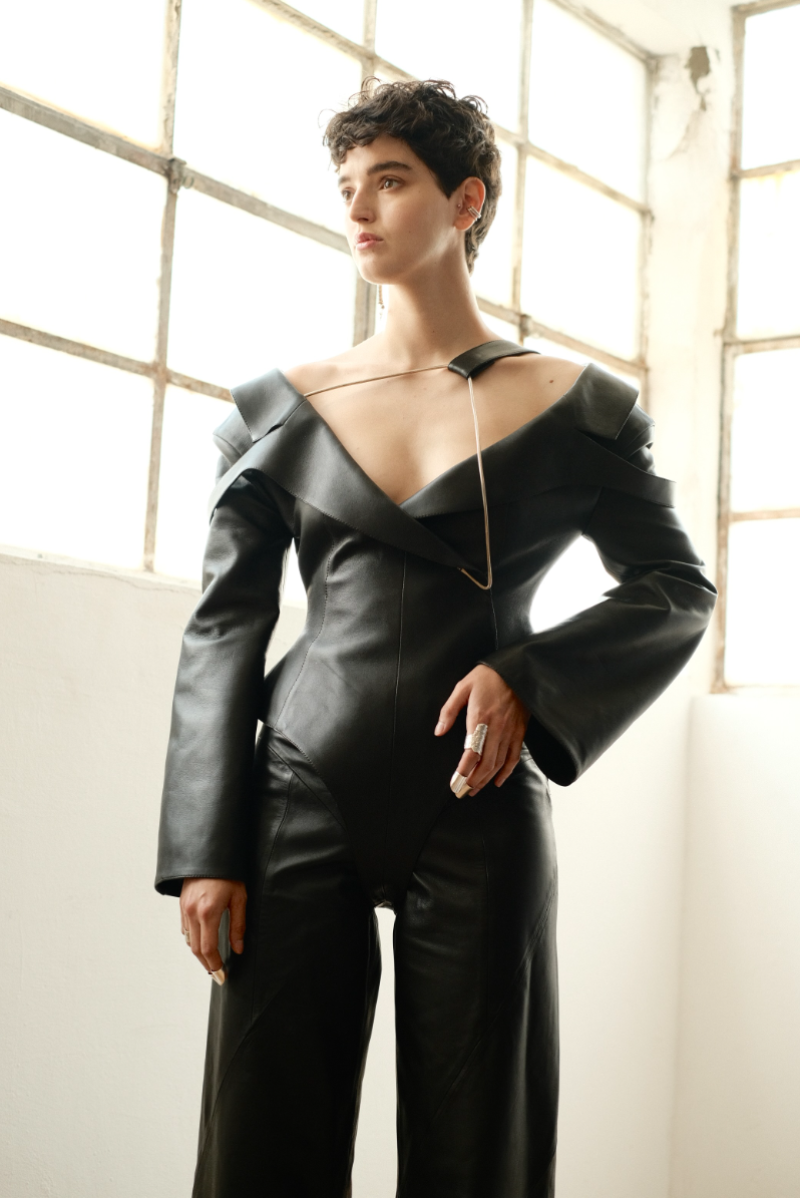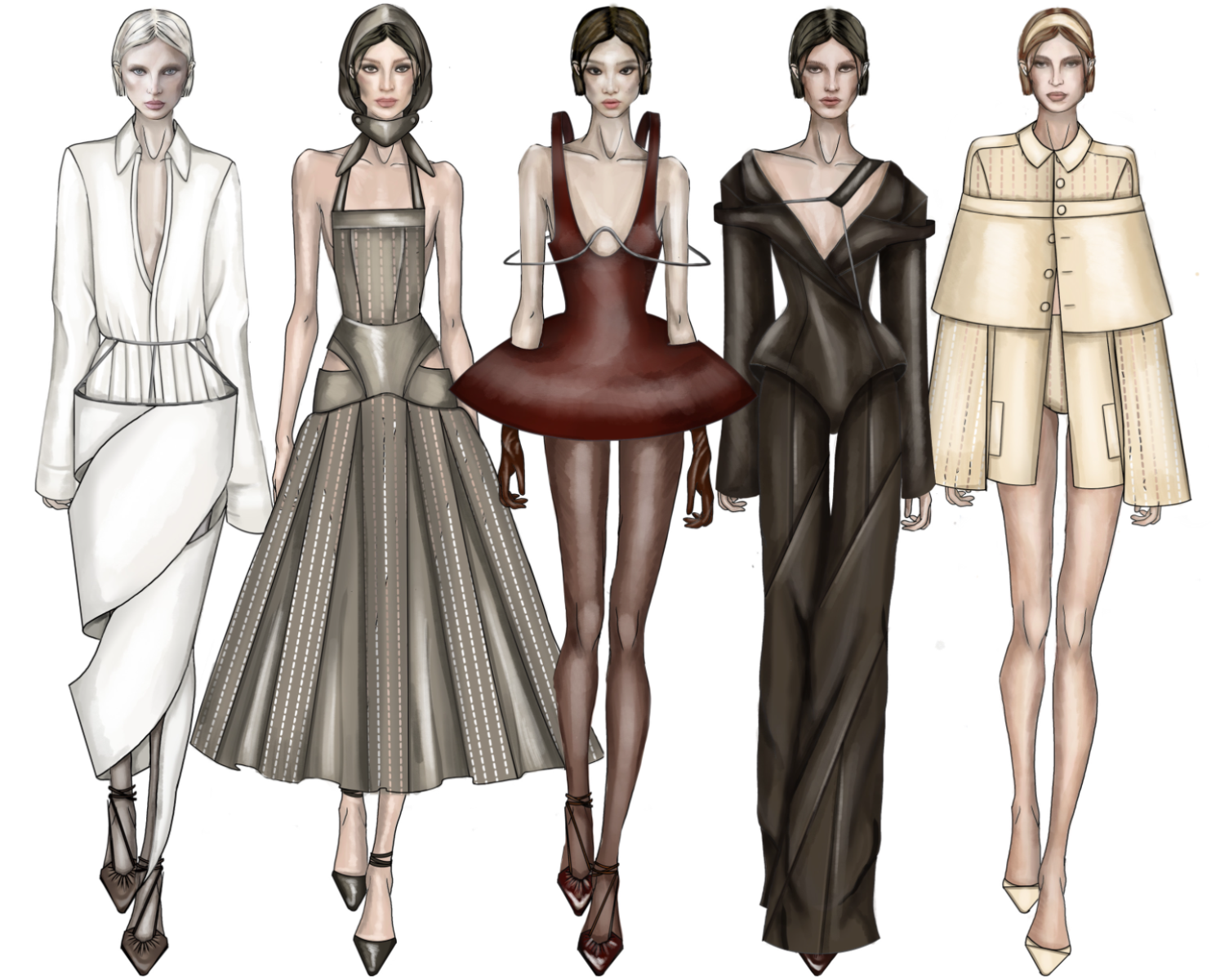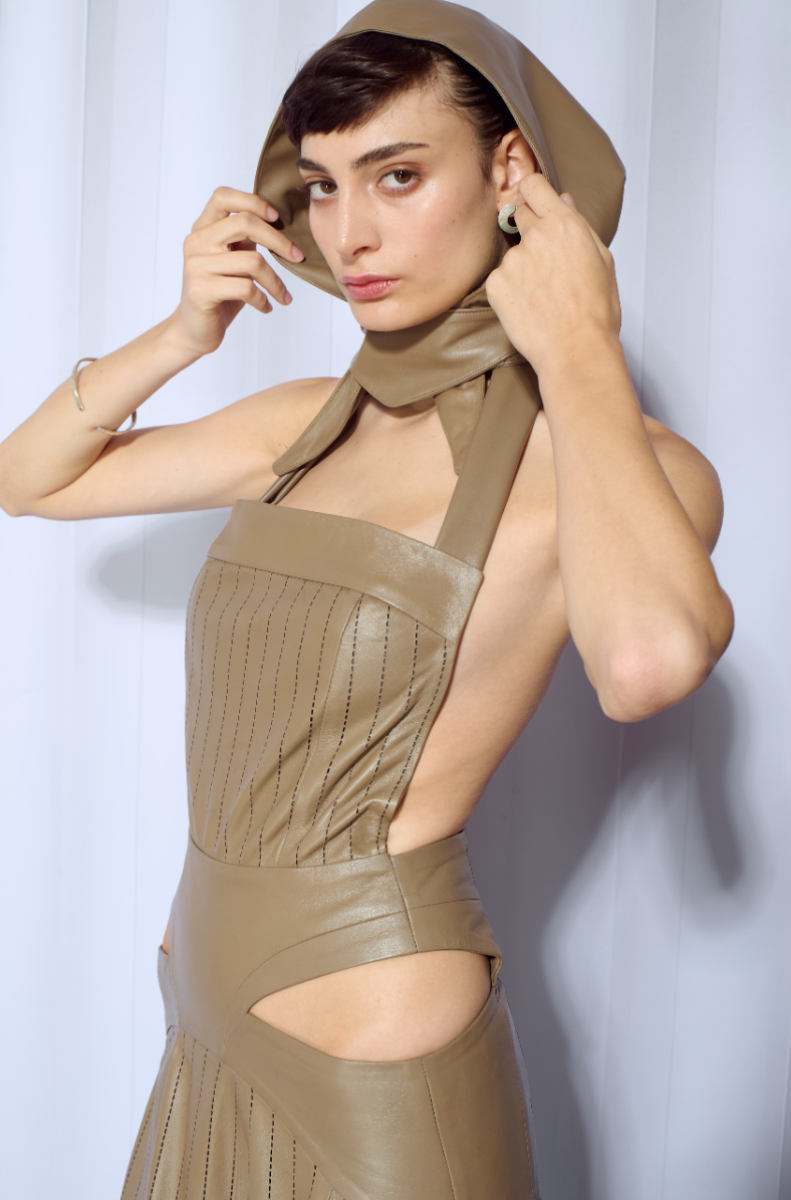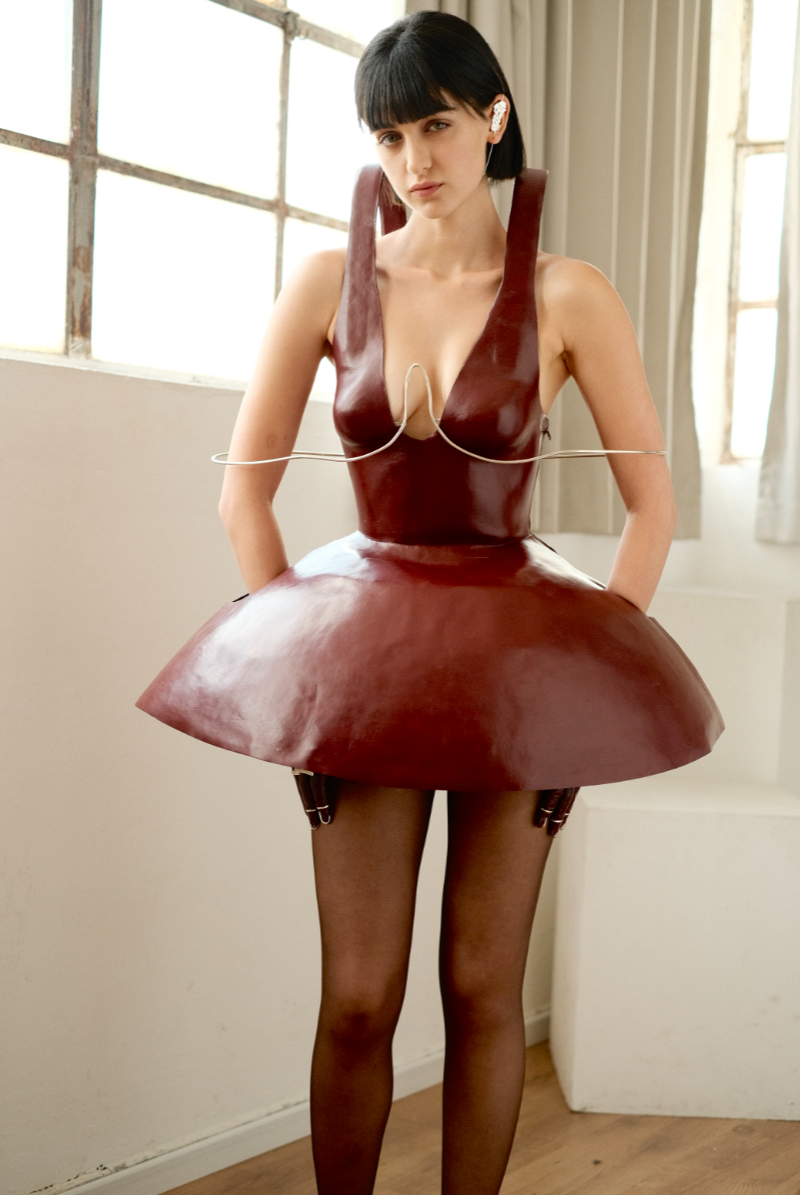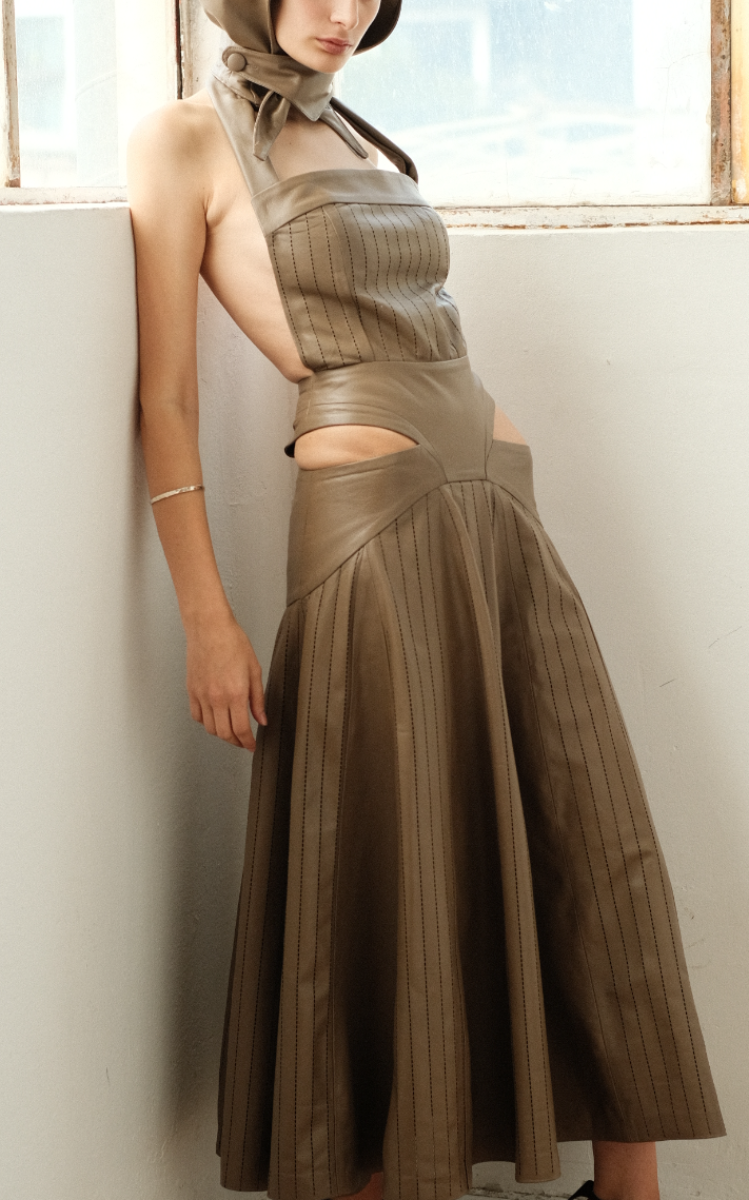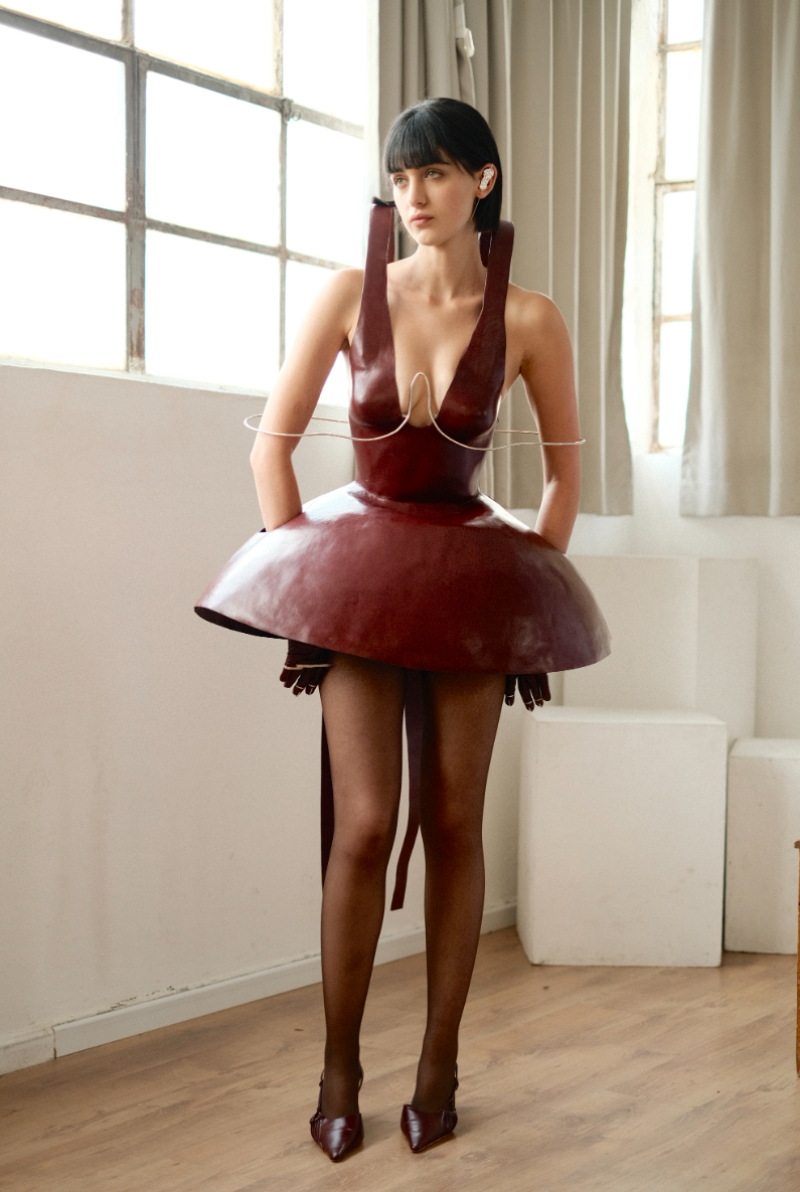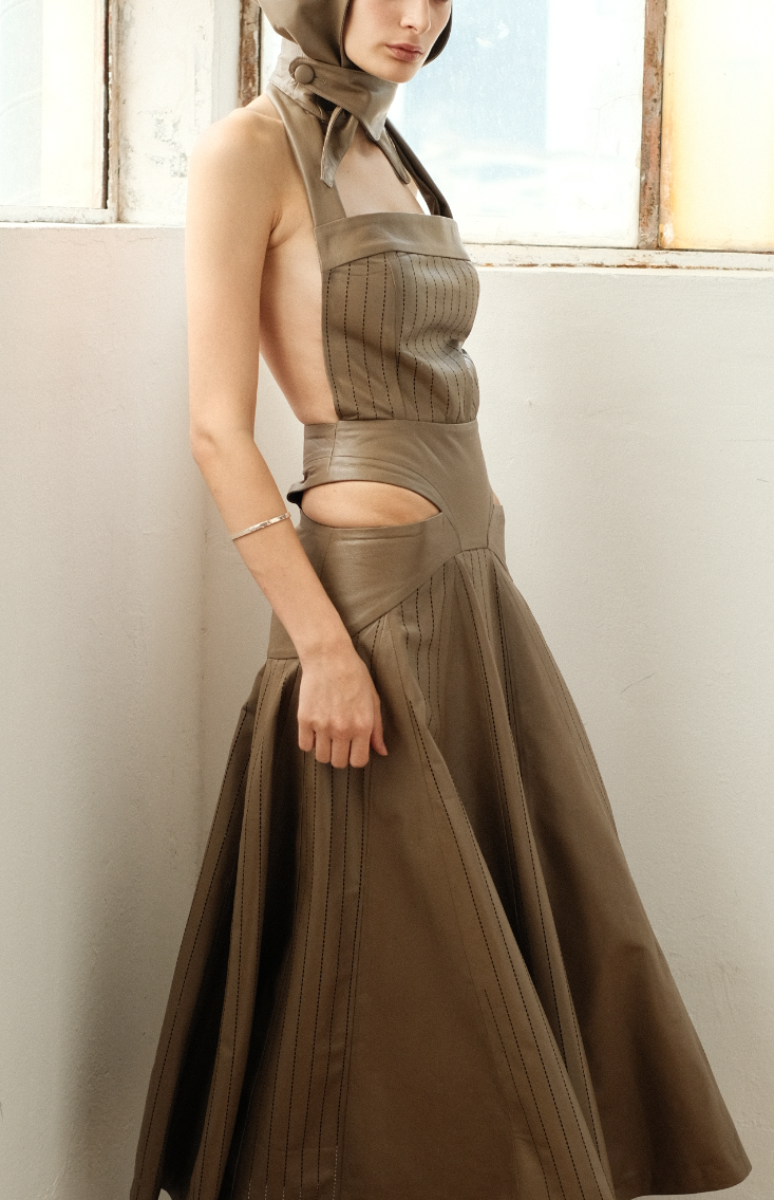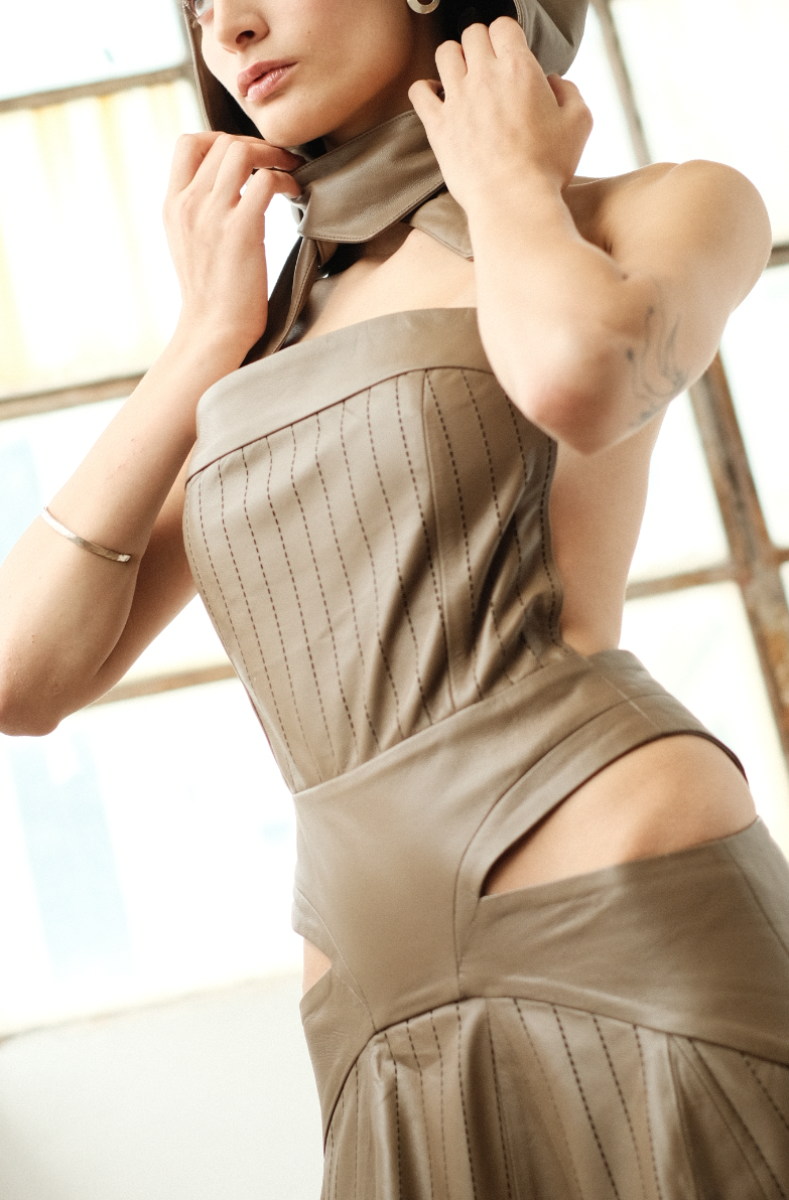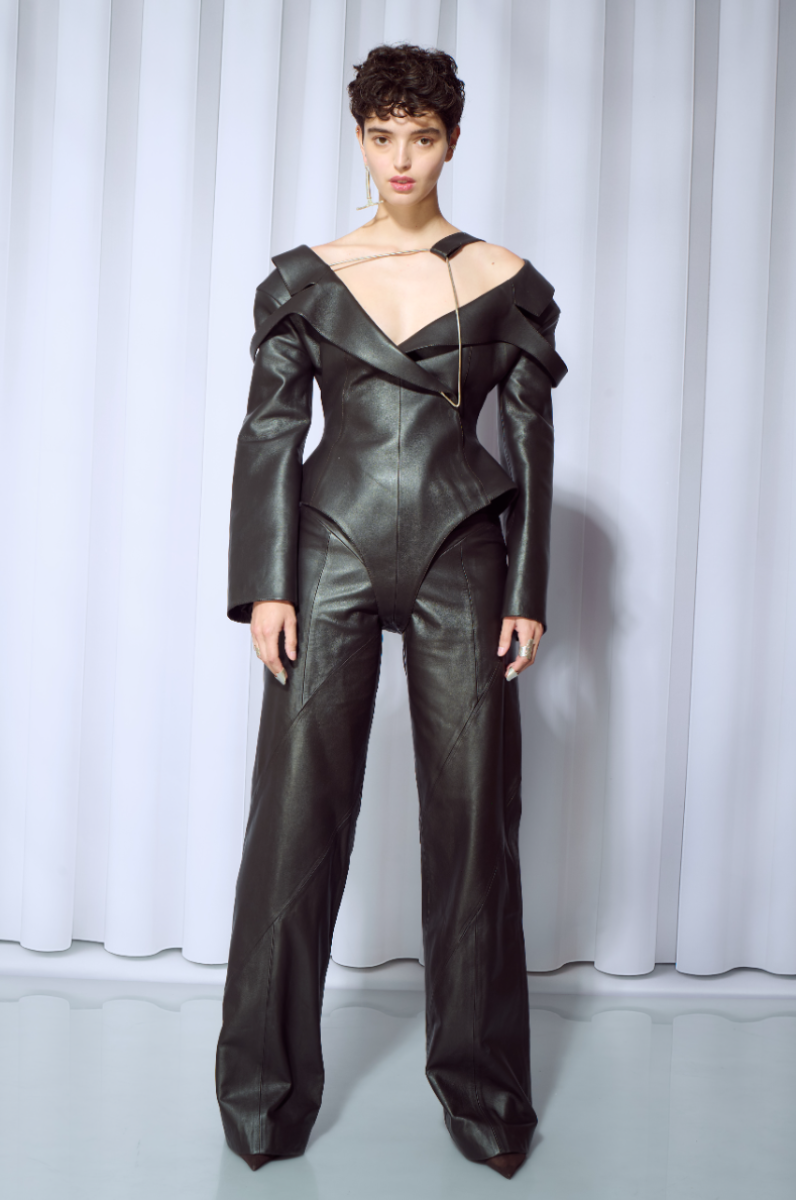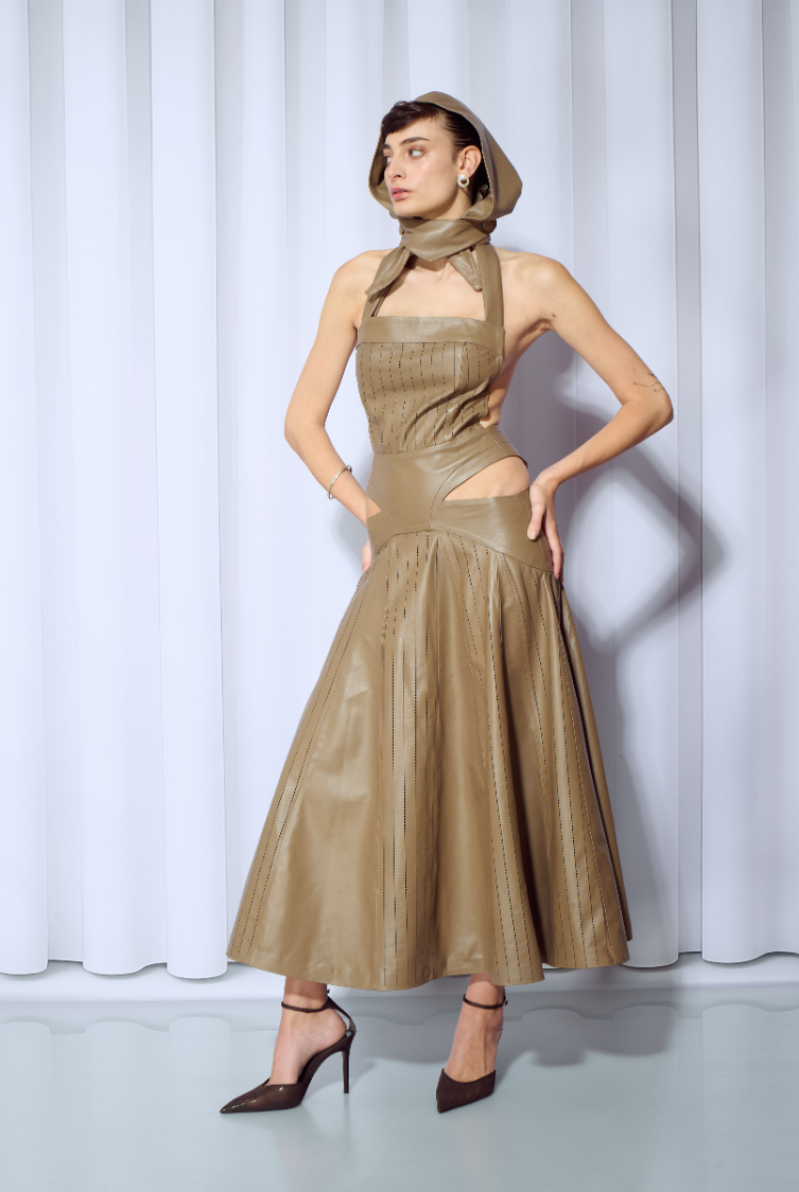ariel berka
Fashion Design BDes
Shenkar
Specialisms: Apparel / Womenswear / Sustainable Fashion/Textiles
Location: Tel Aviv, Israel
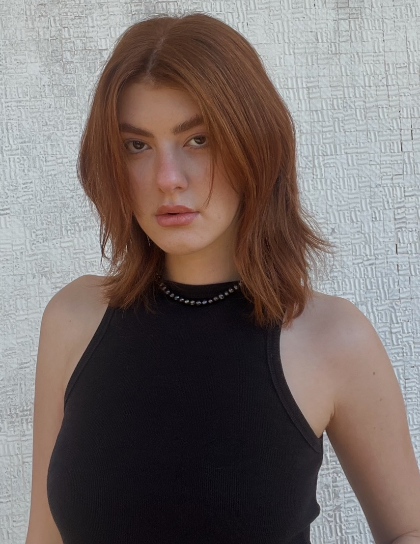
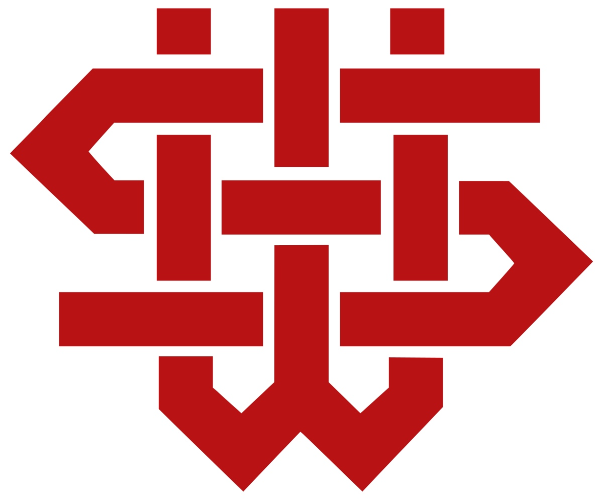
ariel berka

First Name: ariel
Last Name: berka
Specialisms: Apparel / Womenswear / Sustainable Fashion/Textiles
Sectors:
My Location: Tel Aviv, Israel
University / College: Shenkar
Course / Program Title: Fashion Design BDes
About
Ariel Berka is a Tel Aviv-based fashion designer whose work explores themes of female identity, autonomy, and the tension between form and control. Her design language is rooted in precision tailoring and material purity, using natural fabrics such as leather, wool, and silk in innovative and unexpected ways. With a strong emphasis on silhouette, structure, and the emotional impact of clothing, her aesthetic combines vintage references with a minimalist, architectural approach.
My graduation project, “First Person Feminine,” confronts male control over the female body through history, law, and culture, with a focus on reproductive rights and the politics of abortion. Inspired by the image of the hanger a brutal symbol of illegal abortions and by the economy of the body as a site of profit and punishment, the collection exposes how women’s autonomy has been systematically undermined. Referencing 1950s silhouettes, each garment is sculpted from leather, a material both strong and restrictive, manipulated through cutting, engraving, and molding to reflect the tension between imposed identity, financial control, and the fight for self-determination.
Competitions

Global Creative Graduate Showcase 2025
׳First Person Feminine׳ ׳First Person Feminine׳ is a womenswear collection made entirely from natural leather, exploring the ongoing control over the female body through historical, cultural, and political lenses. The project was born from the fear that a woman’s value is still defined by her reproductive capacity a notion rooted in religious texts, patriarchal myths, and modern legislation restricting access to abortion. It draws inspiration from the visual codes of 1950s femininity, religious modesty, nursing garments, and symbolic objects like hangers and IUDs all reframed as tools of control. Each of the five looks examines a different archetype of womanhood and its entanglement with imposed roles: The Bound: A tailored shirt-dress made from cream lamb leather, cinched with a sculptural silver 925 belt. The skirt spirals outward in asymmetric panels, placing the wearer at the center of a vortex — a visual metaphor for the push and pull between dominance and submission. Belted with a sterling silver belt holding the skirt in the air. The Housewife: A mocha lamb leather apron-dress with laser-cut pinstripes and bold cutouts mimicking underwear. It references the 1950s ideal of domesticity while exposing the absurdity of modesty codes that both conceal and reveal. The Idol: A blood-red sculpted dress in vegetable-tanned leather, molded directly on a female form with lifted straps that suggest a body hung for display. Silver wires embrace the bust and arms like bra underwires, transforming support into confinement. Inspired by the objectification of women, this piece becomes a cage wrapped in beauty. The Caged: A structured bodysuit in dark brown lamb leather with a masculine blazer cut that exaggerates feminine curves. It closes with a silver hanger-shaped clasp over wide, and circular-cut trousers — symbolizing the entrapment of reproductive rights and the threat of forced motherhood. The Mother: A banana-yellow calf leather A-line cape-Jacket recalling postwar silhouettes. Underneath, a nursing-bra-inspired top with IUD-shaped silver buckles and vintage high-waisted briefs references the conflict between maternal expectations and bodily autonomy. All garments incorporate 925 silver elements designed especially for the collection, echoing medical devices, lingerie structures, and objects associated with women’s reproductive histories. Techniques include leather molding, laser cutting, hand-dyeing, and structural tailoring. Each leather was carefully selected — lamb, calf, and vegetable-tanned hide — for its texture, pliability, and alignment with sustainable, slow-fashion values. This collection uses leather not only for its visual and tactile qualities, but as a symbol of endurance, restriction, and resistance. It confronts the systems that shape, regulate, and objectify the female body — and offers a new language of strength through craft. Through the collection I explore how femininity is shaped, constrained, and often judged — and reflect my own experience of alienation as a woman in a world that values reproduction over ambition.
